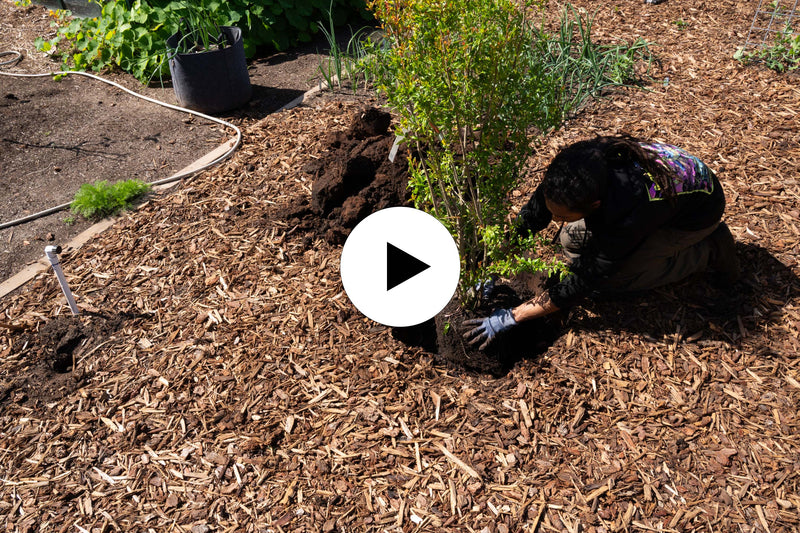



Lapins Cherry Tree
View More Planting Info
Plant Lapins cherry trees in full sun with lots of room to grow in well-draining soil. A mature tree can reach 20 feet high unless kept shorter with regular pruning. Provide at least the same amount of width as the tree will grow when spacing around other plants and structures. Dig a hole twice as wide and the same depth as the root ball. Add some compost to the removed soil to use as backfill. Plant the tree to the level where the graft union is 2-3 inches above the soil line. Fill in with the improved soil and tamp down to remove air pockets. Make a well around the basin of the tree and water well. Add a 3 to 4 inch layer of organic mulch to limit weeds and conserve moisture.
Sunlight:
Although it will tolerate some shade, it will not produce much fruit if not given at least 8 hours of sunlight a day.
Fertilizing:
Using a balanced fertilizer, apply 3 inches away from the trunk to the dripline, using the correct dosage specified by the manufacturer.
Watering:
Lapins require moderate watering during dry spells. Once a week will be sufficient. Do not overwater.
- Product Info
- Care and Maintenance
- Planting Care
- Growing Zone
Product Info
Mature Height: 15-20 ft.
Mature Width: 10-15 ft.
Sunlight: Full Sun
Growth Rate: Moderate
Does Not Ship To: AZ, CA, ID, WA, OR
Care and Maintenance
Watering: Water regularly in the growing season and while the tree is establishing. Once the tree matures, it will only need watering when rainfall is limited. They do not do well with long periods of drought.
Fertilizing: The best time to fertilize Lapins cherry trees is in spring. Use a balanced fertilizer with equal NPK ratios. Fertilize at the drip line for best results.
Pruning: In late winter, prune the tree to increase fruit production for the next season. Remove any damaged or diseased branches. Start getting light into the middle of the tree by removing any crossing branches and pruning the rest to keep it neat and compact.
Pests and Diseases: Lapins have an excellent resistance to bacterial blight and fruit cracking. Look out for other common cherry pests and manage them immediately.
Pollination: This tree is self-pollinating.
Harvesting: Harvest from late June to August. Tasting one first ensures the fruit is ripe and ready for harvesting. Cherries will not ripen off the tree, so it's important to let them turn dark red and become ripe before twisting the stems off the branches.
Recovery Time: Transitioning from our nursery to your home can be a bit of a shock to your plant. A short acclimation period helps it recover and reduces stress.
Climate Adjustment: Every environment is unique. Giving your plant time to adjust to the local climate, humidity, and light conditions in a shady spot will set it up for better growth and health.
How to Acclimate Your Plant: Keep the plant in its container and place it in a shady, sheltered area away from high winds. Ensure it's watered adequately – the soil should be moist but not waterlogged. Monitor the plant for any signs of distress and allow it to adjust for a few days before planting. After a few days of acclimation, your plant will be better prepared to thrive in its new home for years to come.
Planting Care
Sunlight: Although it will tolerate some shade, it will not produce much fruit if not given at least 8 hours of sunlight a day.
Watering: Lapins require moderate watering during dry spells. Once a week will be sufficient. Do not overwater.
Fertilizer: Using a balanced fertilizer, apply 3 inches away from the trunk to the dripline, using the correct dosage specified by the manufacturer.
Growing Zone
Growing Zone 5-9

Fruit Trees & Bushes Delivered to Your Doorstep
Unpack, Plant and Grow!






